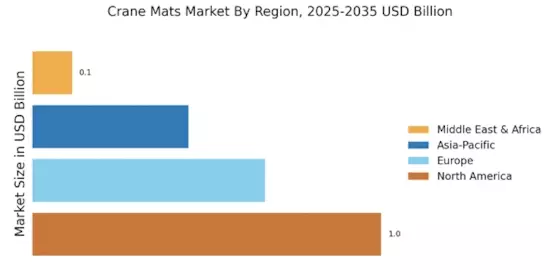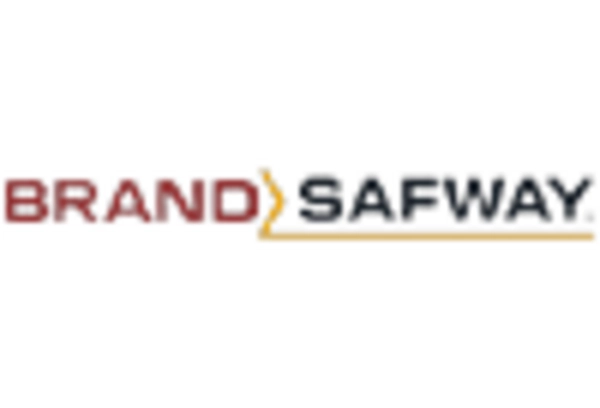Focus on Safety Standards
Safety remains a critical concern within the Crane Mats Market, as companies strive to adhere to stringent safety regulations. The increasing emphasis on workplace safety has led to a greater demand for crane mats that meet or exceed industry standards. In 2025, it is estimated that compliance with safety regulations will drive a significant portion of the market, as organizations seek to mitigate risks associated with heavy lifting operations. The use of high-quality crane mats not only enhances safety but also reduces the likelihood of accidents, thereby protecting both personnel and equipment. This focus on safety is likely to continue influencing purchasing decisions, as companies recognize the long-term benefits of investing in reliable crane mats.
Technological Innovations
Technological advancements are reshaping the Crane Mats Market, introducing innovative materials and designs that enhance performance. The integration of advanced manufacturing techniques has led to the development of lighter yet stronger crane mats, which can improve operational efficiency. In 2025, the market is expected to witness a rise in the adoption of composite materials that offer superior durability and resistance to environmental factors. These innovations not only extend the lifespan of crane mats but also contribute to sustainability efforts by reducing material waste. As companies increasingly prioritize efficiency and environmental responsibility, the demand for technologically advanced crane mats is likely to grow, reflecting a shift towards more sustainable construction practices.
Rising Construction Activities
The Crane Mats Market is experiencing a surge in demand due to increasing construction activities across various sectors. Infrastructure development, particularly in urban areas, is driving the need for reliable and durable crane mats. As governments invest in public works and private entities expand their operations, the requirement for crane mats to support heavy machinery becomes paramount. In 2025, the construction sector is projected to grow at a rate of approximately 5.5% annually, further propelling the Crane Mats Market. This growth is indicative of a broader trend where construction companies prioritize safety and efficiency, leading to a heightened demand for high-quality crane mats that can withstand the rigors of heavy lifting and transportation.
Expansion of Renewable Energy Projects
The Crane Mats Market is poised to benefit from the expansion of renewable energy projects, particularly in wind and solar energy sectors. As the world shifts towards sustainable energy sources, the construction of wind farms and solar installations necessitates the use of crane mats for the safe operation of heavy equipment. In 2025, investments in renewable energy are projected to increase significantly, creating a robust demand for crane mats that can support the unique requirements of these projects. This trend not only highlights the versatility of crane mats but also underscores their importance in facilitating the transition to cleaner energy solutions. The growth of renewable energy initiatives is likely to be a key driver for the Crane Mats Market.
Increased Demand from Oil and Gas Sector
The Crane Mats Market is experiencing heightened demand from the oil and gas sector, which relies heavily on crane mats for various operations. As exploration and production activities expand, the need for durable and reliable mats becomes critical to ensure safe and efficient operations. In 2025, the oil and gas industry is expected to invest significantly in infrastructure, further driving the demand for crane mats. These mats provide essential support for heavy machinery used in drilling and extraction processes, thereby enhancing operational safety. The ongoing investments in oil and gas projects indicate a sustained growth trajectory for the Crane Mats Market, as companies seek to optimize their operations while adhering to safety standards.

















Leave a Comment